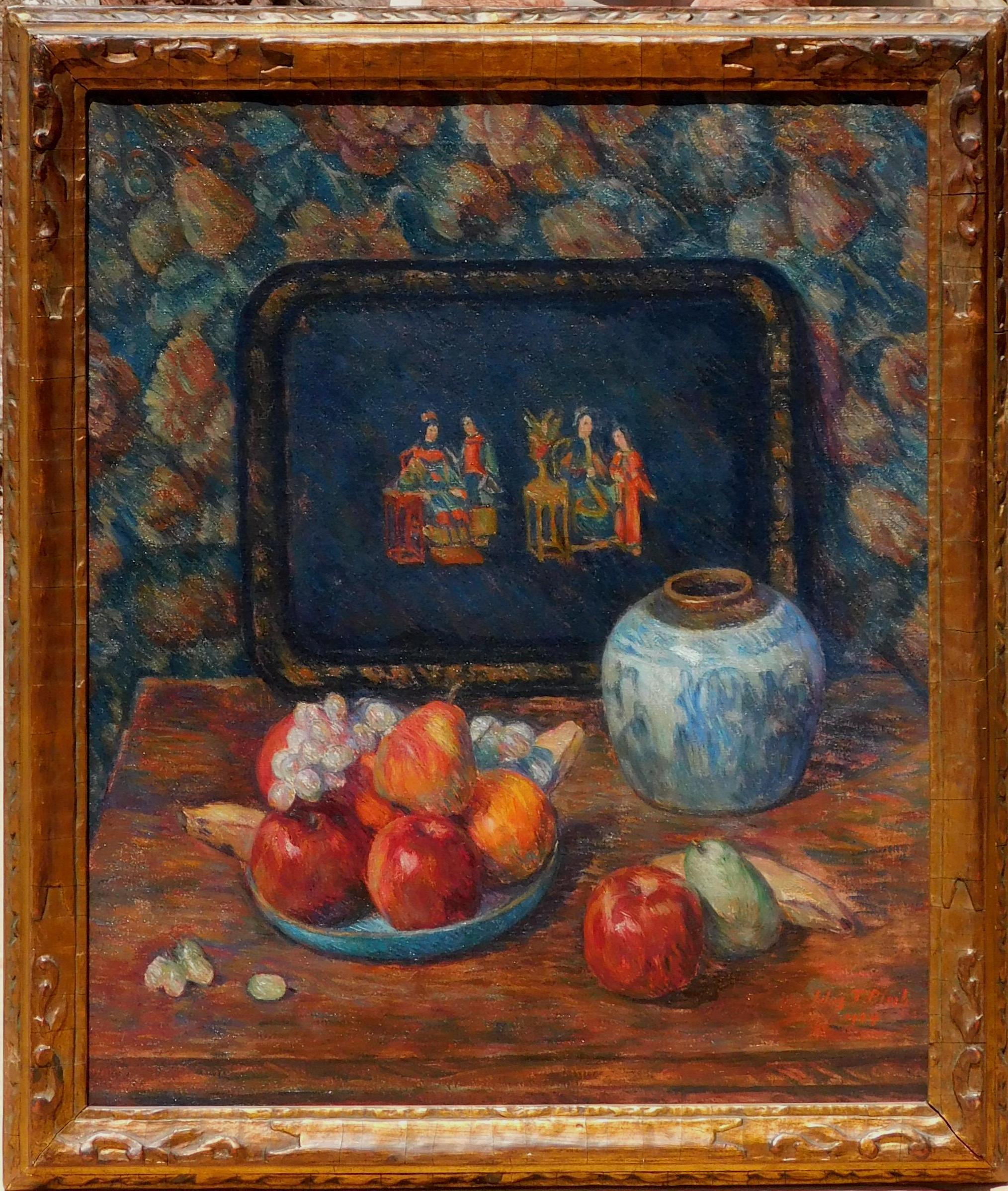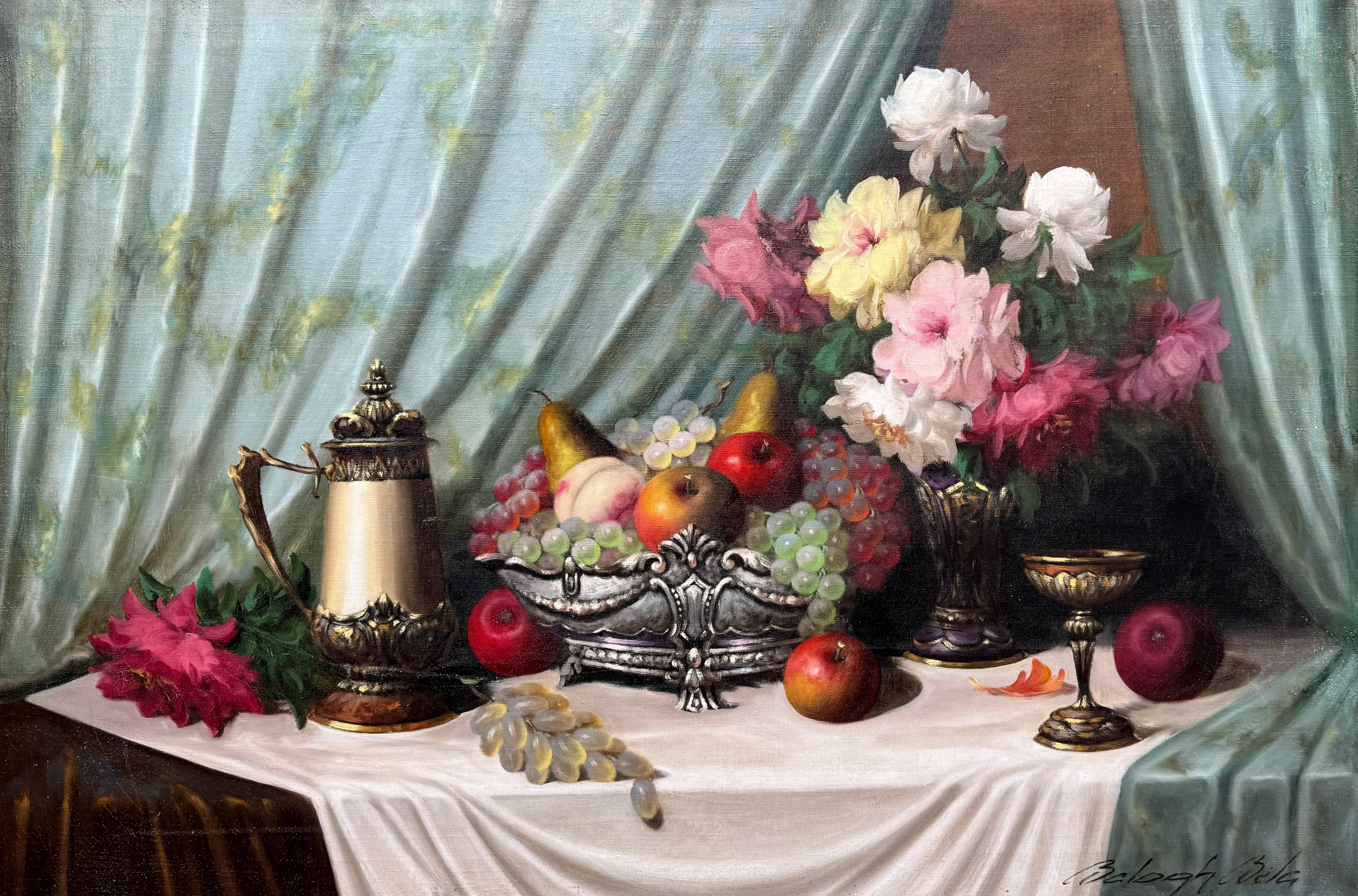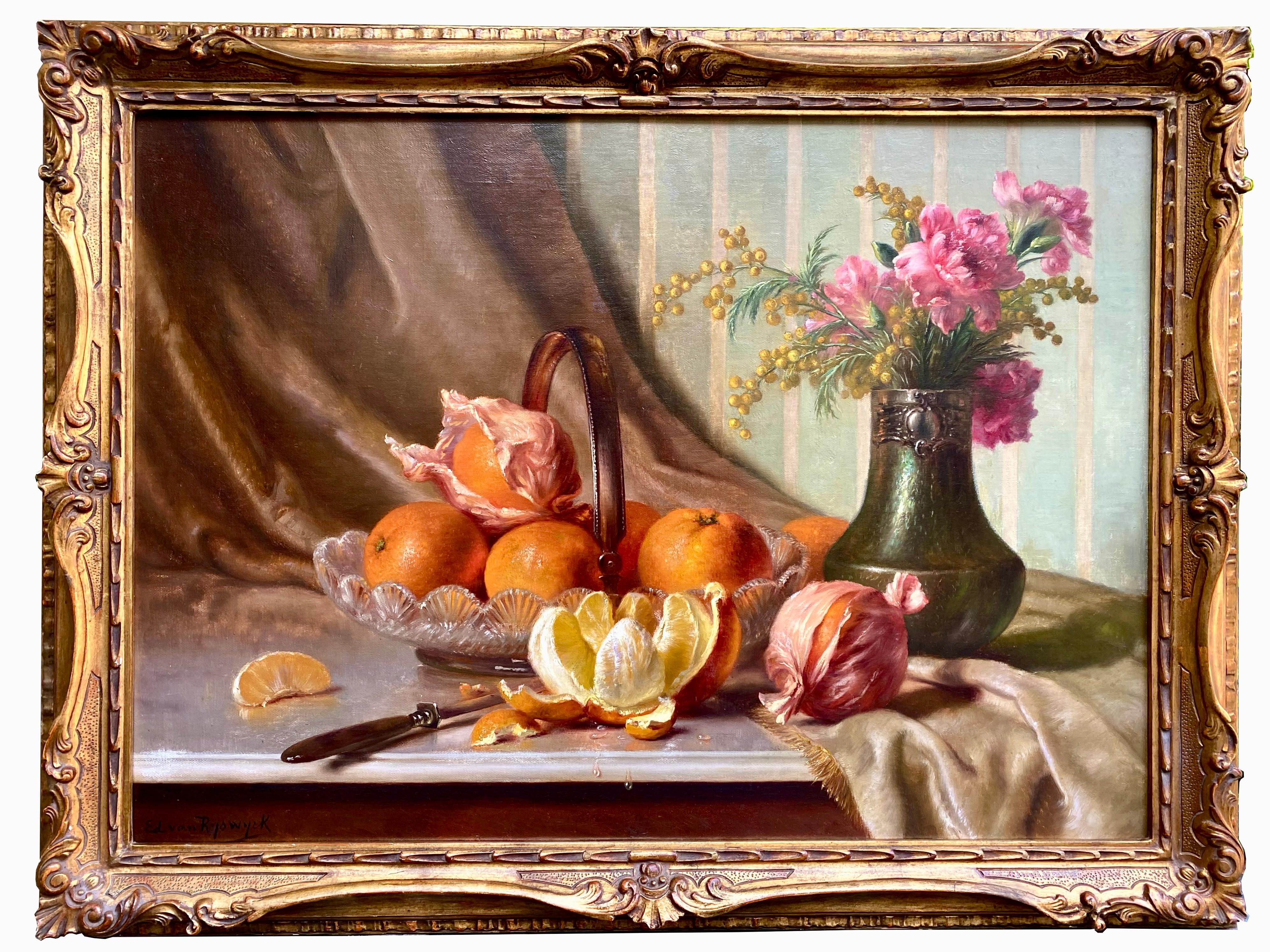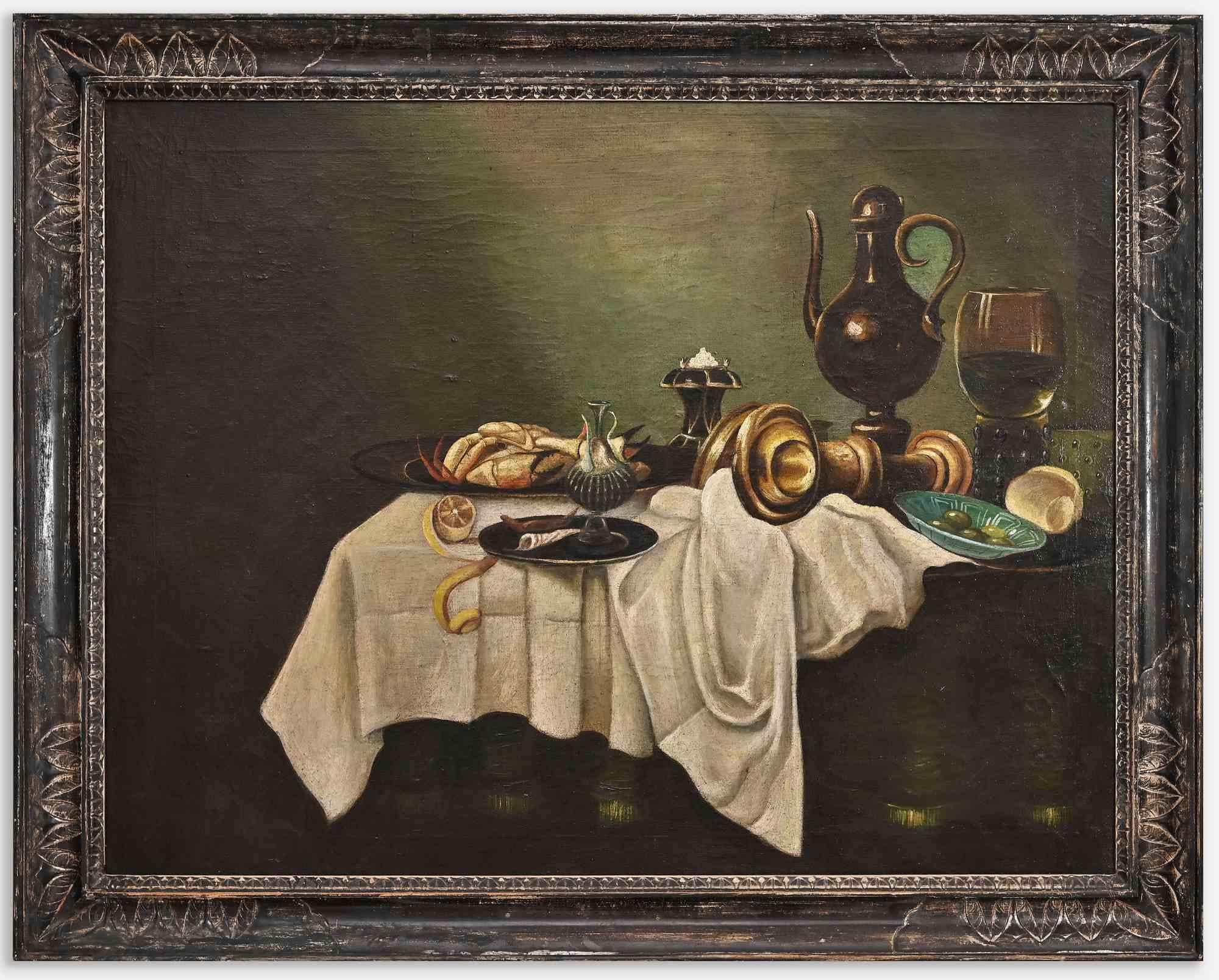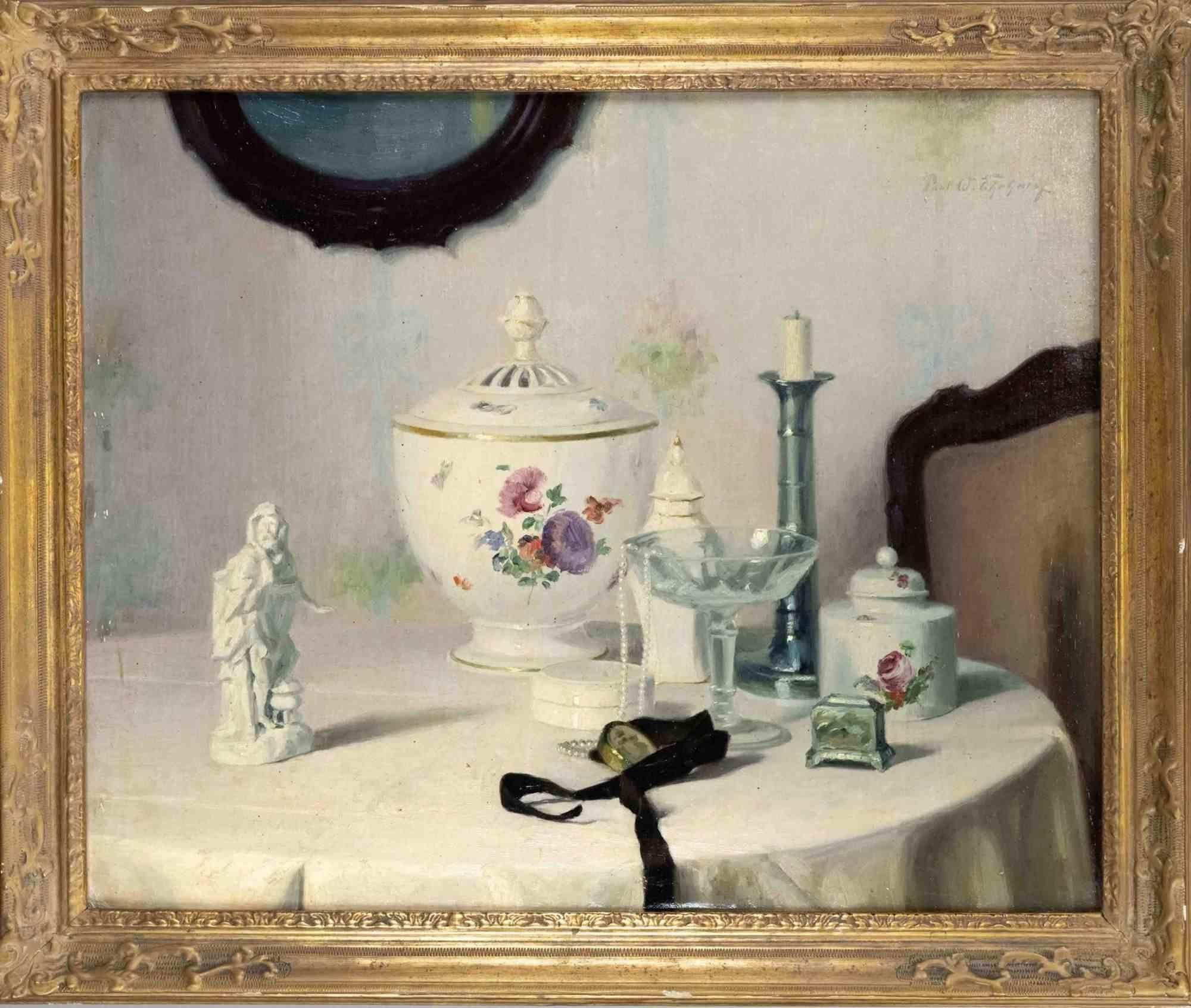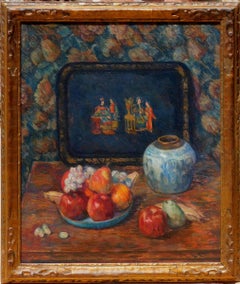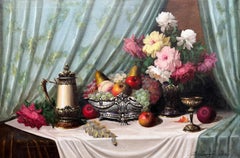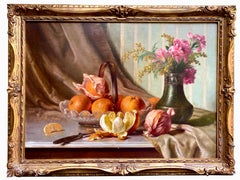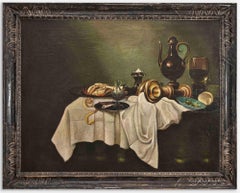Items Similar to Óleo sobre tabla - Bodegón con elementos chinescos - Año 1929
Want more images or videos?
Request additional images or videos from the seller
1 of 20
Albert BovenÓleo sobre tabla - Bodegón con elementos chinescos - Año 19291929
1929
$2,393.20
£1,764.24
€2,000
CA$3,311.24
A$3,592.86
CHF 1,905.95
MX$44,120.04
NOK 23,570.35
SEK 22,321.09
DKK 15,227.75
About the Item
Excepcional obra del prestigioso pintor holandes Albert Boven (Bruselas, act. sig. xix - xx)
Se trata de un oleo sobre tabla de gran tamaño y calidad
Representando un bodegon con elementos chinescos
Como pueden ver en las fotografías, va firmado por el autor en la parte inferior (a.a.boven) y fechado del año 1929
La pintura se presenta muy bien enmarcada
El estado en general es bueno
Medidas obra: 122 cm. de altura x 153 cm. de ancho
Medidas obra enmarcada: 145 cm. de altura x 173 cm. de ancho
:::::::::::::::::::::::::::::::::::::::::::::::::::::::::::::::::::::::::::::::::::::::::::
Albert Boven, xix-xx, fué un pintor belga de escenas de género, interiores, personajes y composiciones orientalistas. fue un estudiante de la academia de bruselas.
- Creator:Albert Boven (Belgian)
- Creation Year:1929
- Dimensions:Height: 57.09 in (145 cm)Width: 68.12 in (173 cm)Depth: 1.97 in (5 cm)
- More Editions & Sizes:122 x 153 cm. - Edición únicaPrice: $2,393
- Medium:
- Movement & Style:
- Period:
- Condition:
- Gallery Location:Sant Celoni, ES
- Reference Number:1stDibs: LU2801216173802
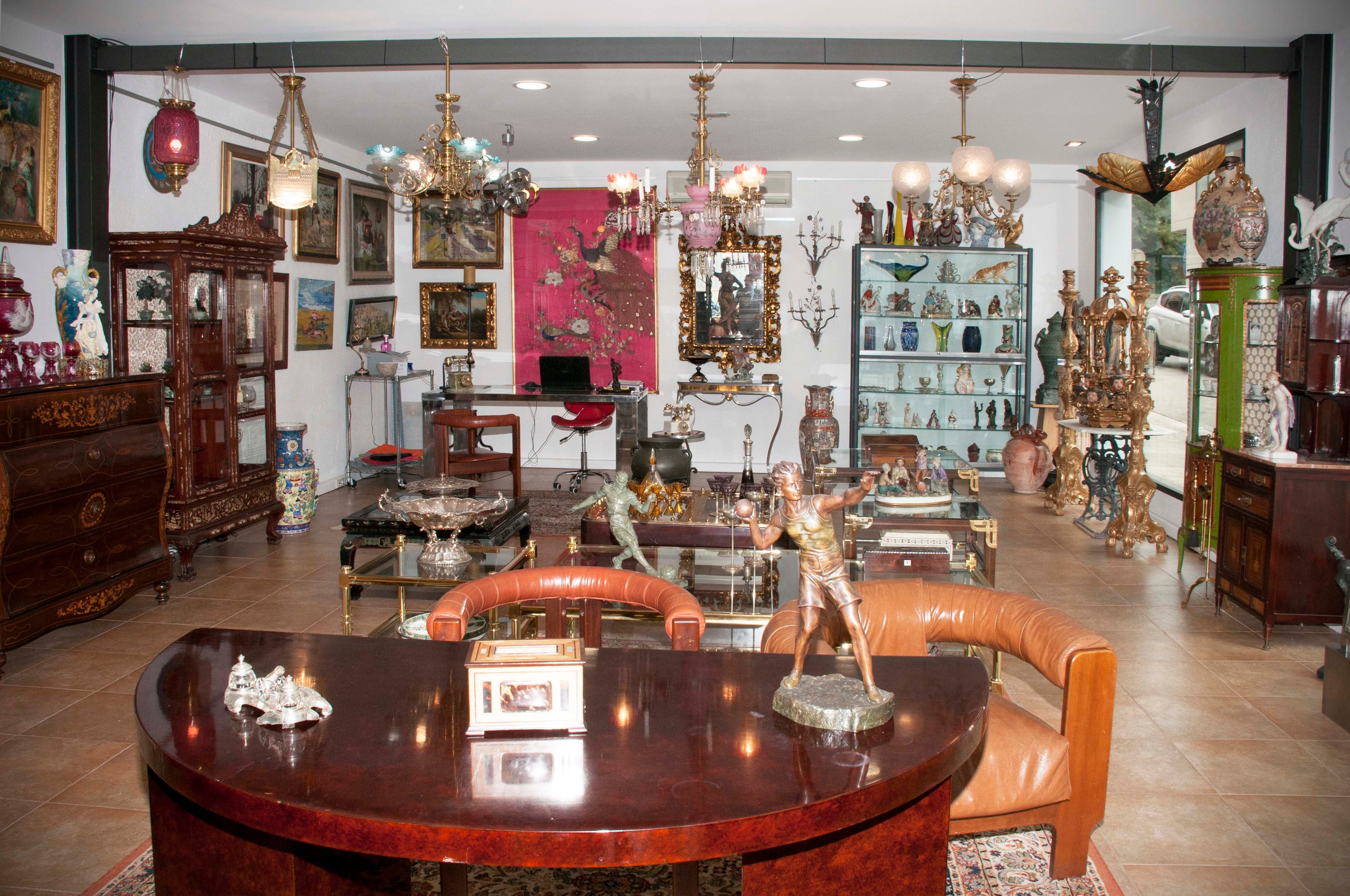
About the Seller
5.0
Vetted Professional Seller
Every seller passes strict standards for authenticity and reliability
Established in 1974
1stDibs seller since 2024
19 sales on 1stDibs
Typical response time: 14 hours
- ShippingRetrieving quote...Shipping from: Sant Celoni, Spain
- Return Policy
Authenticity Guarantee
In the unlikely event there’s an issue with an item’s authenticity, contact us within 1 year for a full refund. DetailsMoney-Back Guarantee
If your item is not as described, is damaged in transit, or does not arrive, contact us within 7 days for a full refund. Details24-Hour Cancellation
You have a 24-hour grace period in which to reconsider your purchase, with no questions asked.Vetted Professional Sellers
Our world-class sellers must adhere to strict standards for service and quality, maintaining the integrity of our listings.Price-Match Guarantee
If you find that a seller listed the same item for a lower price elsewhere, we’ll match it.Trusted Global Delivery
Our best-in-class carrier network provides specialized shipping options worldwide, including custom delivery.More From This Seller
View AllÓleo sobre tela - Bodegón - Año 1974
Located in Sant Celoni, ES
Estado de conservación muy aceptable el de la pintura
La obra se presenta enmarcada (el marco presenta una leve falta)
Medidas obra: 65 cm altura x 92 cm ancho.
Medidas marco 70 c...
Category
1970s Impressionist Still-life Paintings
Materials
Oil
Óleo sobre tela - Bodegón de flores
Located in Sant Celoni, ES
Firmado en la parte inferior
Estado de conservación aceptable
Se presenta enmarcada la obra
Medidas de la obra: 50 x 61 cm.
Medidas del marco: 61 x 72 cm.
Category
1950s Impressionist Still-life Paintings
Materials
Oil
Oil on canvas - still life
Located in Sant Celoni, ES
Firmado por el artista en la parte superior
Medidas obra: 51 x 46 cm.
Medidas marco: 74 x 68 cm.
Se presenta enmarcada la obra (el marco presenta algunas faltas)
Buen estado de c...
Category
1950s Realist Still-life Paintings
Materials
Oil
Flores bajo el cielo - Óleo sobre tela - Año 1941
Located in Sant Celoni, ES
La obra va firmada por el artista en la parte inferior y fechada del año 1941
Se presenta enmarcada la pintura (el marco presenta algunas leves faltas)
El estado de la obra es buen...
Category
1940s Symbolist Still-life Paintings
Materials
Oil
Composición floral - Óleo sobre tela
Located in Sant Celoni, ES
La obra va firmada en la parte inferior
Esta obra es de aproximadamente 1900-1910
El estado de la obra es aceptable
La obra se presenta enmarcada (el marco presenta alguna leve fa...
Category
Early 20th Century Realist Still-life Paintings
Materials
Oil
Óleo sobre tela - Bodegón - Año 1971
Located in Sant Celoni, ES
Firmado en la parte inferior y fechado del año 1971
Se presenta enmarcada la pintura (el marco presenta algunos signos de uso)
El estado de la pintura es aceptable
Medidas obra: 3...
Category
1970s Impressionist Still-life Paintings
Materials
Oil
You May Also Like
Still Life Painting - Chinese Tray with Fruit
By Julius Bloch
Located in Phoenix, AZ
Julius Bloch (1888-1966) German/American painter - Lovely Still Life Oil on Canvas.
Created in the 1920's, this lovely work features a Chinese Tray with Blue and White Pottery and fr...
Category
Early 20th Century Still-life Paintings
Materials
Canvas, Oil
“Elegant Table Still Life”
Located in Southampton, NY
Original oil on canvas painting of an elegant table setting by the Hungarian artist, Bella Balogh. Signed by the artist lower right. Circa 1960. A beautiful classic style still l...
Category
1960s Academic Still-life Paintings
Materials
Canvas, Oil
Edward Van Ryswyck, 1871 – 1931, Belgian Painter, Still Life with Oranges
By Edward Van Ryswyck
Located in Knokke, BE
Van Ryswyck Edward
Antwerp 1871 – 1931
Belgian Painter
Still Life with Oranges and Flowers
Signature: Signed bottom left
Medium: Oil on canvas
Dimensions: Image size 51 x 72 cm, fra...
Category
Early 20th Century Realist Still-life Paintings
Materials
Canvas, Oil
Still Life on a Table - Oil Painting on Canvas - 20th Century
Located in Roma, IT
Still Life on a Table is an original oil painting on canvas realized in the 20th Century.
Good conditions (the painting has been restored in some parts).
Frame included (83x108 cm).
Category
20th Century Modern Figurative Paintings
Materials
Canvas, Oil
Still Life with Glass and Porcelain - Oil Painting by Paul Walter Erhardt - 1920
Located in Roma, IT
Still Life with Glass and Porcelain is an artwork realized by Paul Walter Erhardt (1872-1959).
Oil on canvas, signed upper right.
60 x 75 cm, f...
Category
1920s Contemporary Still-life Paintings
Materials
Oil
Ceramics - Oil on Canvas by Zhang Wei Guang - 2006
By Zhang Wei Guang
Located in Roma, IT
Ceramics is an original oil on canvas realized by the chinese painter Zhang Wei Guang (Mirror) in 2006.
Excellent conditions.
Zhang Wei Guang, also called ‘mirror' was born in Helon...
Category
Early 2000s Contemporary Still-life Paintings
Materials
Oil, Canvas
More Ways To Browse
Still Life With Cat
Tony Bernard
Ara Harutyunyan
Cargo Ship Painting
Coffee Cup Oil Painting
Converse Sneakers
Frank Depietro
Heather Neill
Italian Food Art
Jan Van Huysum
Large Fish Painting
Life Buoy
Painting Of Birds Nest
Painting Of Red Tulips
Painting Of Tea Cups
Pearson Marguerite
Protea Painting
Roberto Ferri
